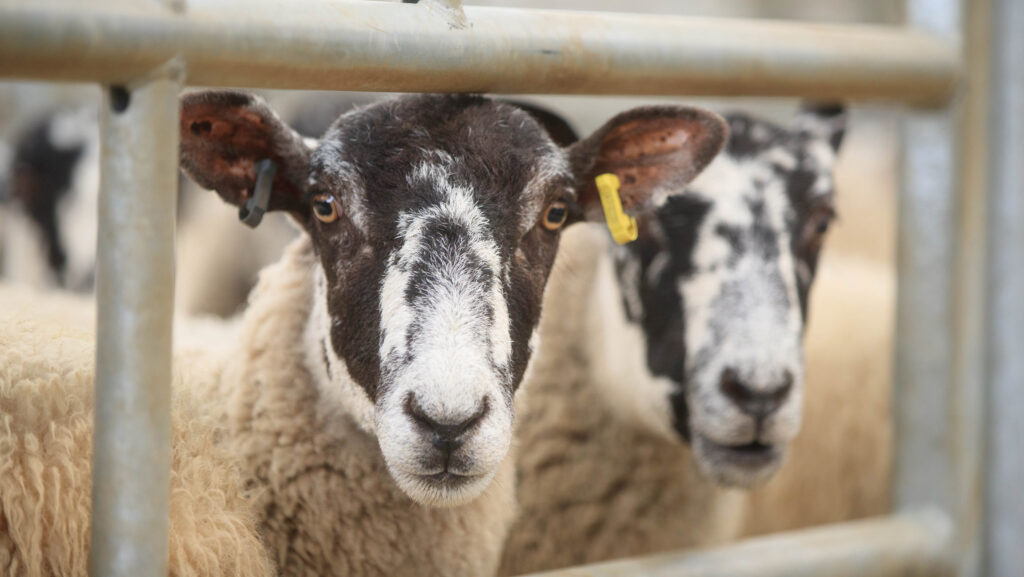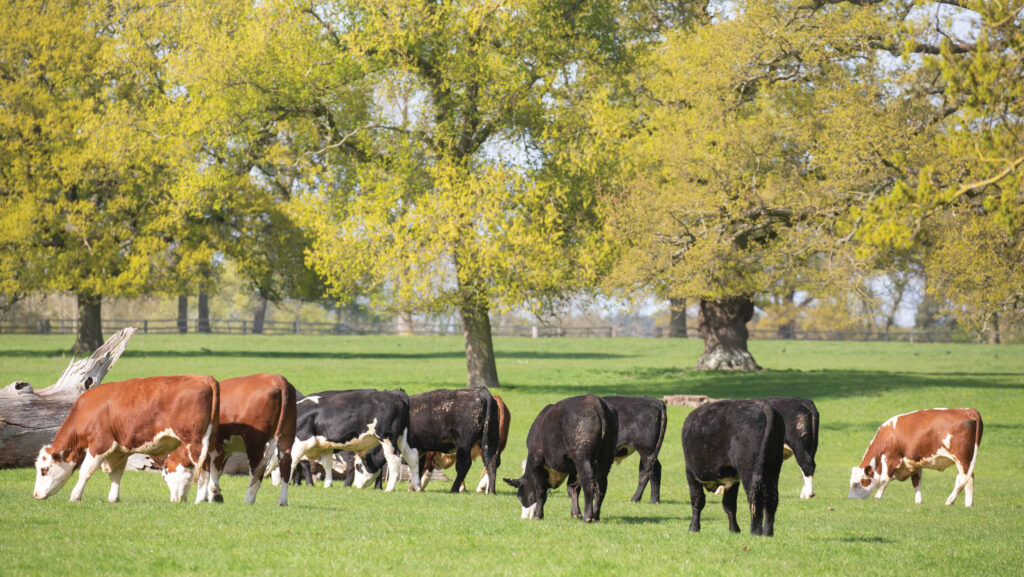Bluetongue virus: What to look out for and how to manage it
 © Tim Scrivener
© Tim Scrivener Bluetongue virus risk is at a seasonal low, but producers should be ready for that to change in spring.
Bluetongue virus is an insect-borne disease that can affect all ruminants. While cattle are thought to be the main carriers of the disease, sheep are the most severely affected.
It is a notifiable disease because of its impact on movement restrictions and animal trade. It is not zoonotic, which means it cannot be spread from animals to humans.
See also: Could thin ewes be a sign of infectious disease on your farm?
About the author

Charlie Stephens is a vet at independent veterinary practice Belmont Farm & Equine Vets.
Here she outlines the signs, risk management and treatment of bluetongue virus in livestock.
Bluetongue virus is transmitted by biting midges (Culicoides species) feeding on infected animals.
The virus reproduces within the midge, which can then spread the disease to other animals.
Direct animal-to-animal transmission has not been reported, except from mother to foetus.
Midges can be blown up to 200km, and though they are inactive in cooler climates (less than 12C), they can survive overwinter.
This makes controlling the disease very difficult once it is circulating.
Clinical signs
Impact of disease and clinical signs vary depending on the strain (serotype). The current outbreak in the UK is bluetongue virus serotype 3 (BTV-3).
Clinical signs are most severe in sheep and goats and include:
- Mouth ulcers
- Discharge of thick mucus from the mouth and nose, and drooling
- Swelling of the mouth, head and neck, especially around the eyes and muzzle
- Swelling of the coronary band (junction where the skin of the leg meets the horn of the foot)
- Reddening of the skin where blood vessels have burst beneath it
- Fever (elevated temperature)
- Lameness
- Difficulty breathing
- Abortion and the birth of deformed and/or weak lambs
- Death – mortality rates can be as high as 70%.
As the main carriers of bluetongue, cattle provide an important reservoir for disease spread.
However, clinical signs in adult cattle are mild, with some infected animals not showing any signs of disease.

© Tim Scrivener
Where they do show signs, these include lameness, nasal discharge and drooling and fever.
Infected cattle can also be lethargic, stop eating, show reddening of the mouth, eyes, nose and coronary band, and develop crusting erosions around the muzzle, nostrils and teats.
In addition, milk yield can drop, and cows infected during pregnancy may abort or give birth to small, weak, deformed or blind calves, with some dying within a few days of birth.
Monitoring and reporting
Vigilant monitoring of herds and flocks is strongly encouraged, as well as reporting any clinical signs of disease.
Bluetongue cannot be diagnosed on clinical signs alone; any suspicion of disease must be reported to the Animal and Plant Health Agency as soon as possible.
Subsequent veterinary examination and diagnostic testing is required to confirm the disease.
Care must be taken when importing live animals and germinal products, following appropriate pre- and post-export testing protocols. It is especially important to adhere to these regulations.
Treatment
There is no cure for bluetongue.
Infected animals may receive supportive care, however, there is potential for long-term production losses in animals that have recovered from the disease, such as reduced milk yield and infertility.
Vaccination remains the most effective way of protecting flocks and herds from bluetongue.
Vaccinations currently exist for BTV serotypes 1-4, and 8. Immunity against the virus is serotype-specific, with no cross-protection.
This means, for example, that an animal exposed to BTV-3, either naturally or via vaccination, is not protected against BTV-8.
The following vaccination guidelines should be followed:
- All vaccines must be supplied by the prescribing vet
- Records of vaccinated animals must be kept for five years
- Details of individual animals and the vaccine used must be provided to Defra within 48 hours of vaccinating
- Any excess doses must be returned to the prescribing vet.
The course of vaccination required will depend on the species being vaccinated, and the vaccine used. Farmers should check the vaccine data sheet and speak to their vet for further advice.
Keeping animals in areas that experience higher winds may reduce the risk of bluetongue disease risk to an extent, by reducing exposure to midges.
Similarly, housing stock may reduce the accessibility of animals to midges. However, this is not always practical or as effective as vaccination.
Other methods of disease prevention do not have sufficient evidence to prove reduced disease risk.
The information in this article was up to date at the time of publishing, however, information and evidence for the current BTV-3 epidemic are dynamic and changing.
Check the government website for regular updates on changing restriction zones and temporary control zones or speak to your local vet for advice.
If bluetongue virus is suspected on-farm, call 03000 200 301 in England and 03003 038 268 in Wales.
Bluetongue: Cases confirmed to date
The total number of bluetongue virus serotype 3 (BTV-3) cases in Great Britain for the 2024 to 2025 vector season stands at 212 (210 in England and two –high-risk moves – in Wales).
The latest cases were identified in cattle in Dorset on 14 February. As a result, the restricted zone was further extended to include Dorset, additional areas of Wiltshire, and parts of Somerset and east Devon.
While colder temperatures have lowered the risk of transmission of the virus, the midges responsible will become more active again as temperatures rise in spring, and producers should be ready to spot any signs of a resurgence in cases.
The location of all premises in Great Britain where one or more animals have tested positive by PCR to BTV-3 is available on the bluetongue case map.
Requirements
Because the UK is in a seasonally vector-low period, the risk of transmission of bluetongue is currently very low.
The following are no longer required:
- Post-movement testing for animals moved out of the zone – provided they have a valid negative pre-movement test result
- Vector control including the use of insecticide
- Animals originating from the restricted zone to be slaughtered at a designated slaughterhouse.
Producers must still:
- Have a licence to move animals or germinal product out of a restricted zone
- Arrange for a pre-movement test for all animals moving out of the restricted zone unless they are moving direct to slaughter or via a dedicated slaughter market
- Comply with any post-movement testing requirements set out in their licence or restriction notice if they moved animals out of the restricted zone on or before 20 January 2025
- Apply for a licence to freeze germinal products within the restricted zone.
Source: Defra and Animal and Plant Health Agency
First case of BTV-12 found in Kent
The first case in the UK of bluetongue serotype 12 (BTV-12) was confirmed in England on 7 February 2025.
It was detected in a single cow in the restricted zone in Kent as part of the annual bluetongue surveillance.
According to Defra, no additional zones are currently planned, but the restricted zone will remain in place. Further testing and epidemiological investigations will be undertaken.
